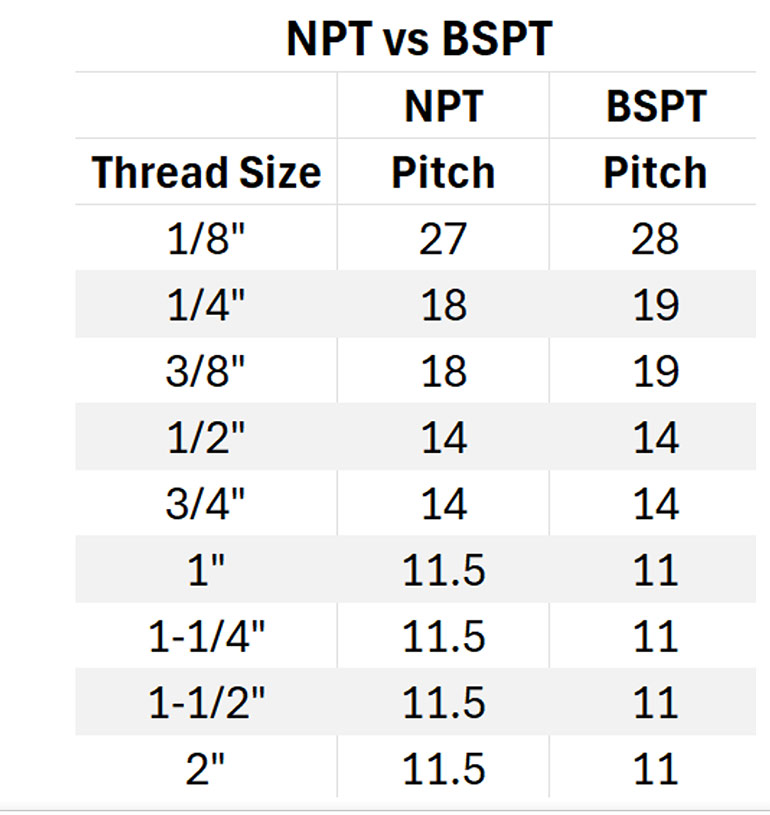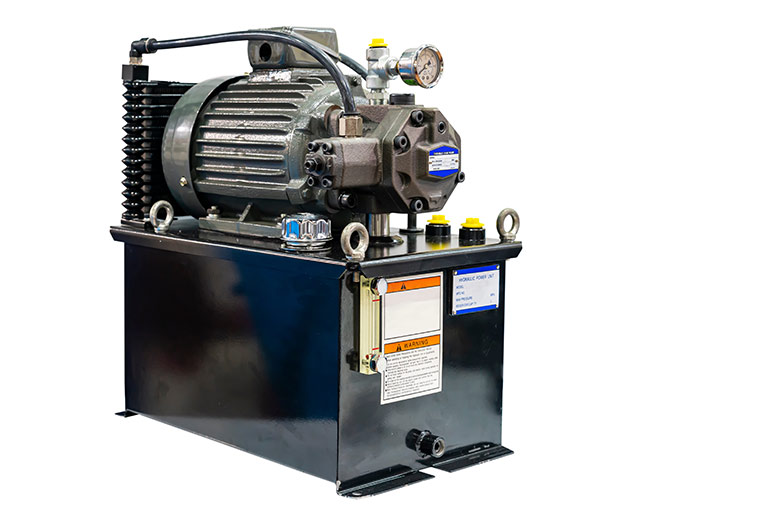By Josh Cosford, Contributing Editor
If you’re not terribly familiar with hydraulic fittings, you may think BSPT is a typo. Is it supposed to be BSPP (British Standard Pipe Parallel) or perhaps NPT (National Pipe Thread)? No, it’s not a typo – we’re actually talking about British Standard Pipe Taper, which is the version of NPT created across the pond, because during fluid power infancy, everyone thought they had a better mousetrap.
Regardless, it’s here and more popular than you’d think. Before discussing when or not to use BSPT threads, let’s look at what defines the standard. As a tapered thread, it was designed to tighten as the male is forced into the female and torqued. This interference fit connection is meant to seal across the threads’ flanks, although a thread sealant is often required to complete the task.

BSPT is actually very close to NPT, except that NPT has 60° flank angles while BSPT has 55° flank angles. That five-degree difference isn’t enough on its own to say they’re incompatible, although using a BSPT male inside an NPT female port may result in more leakage because of the 2.5° gap on each side of the flank. What prevents compatibility is the thread pitch of each standard for which each is available.
You can see from the chart that only ½ in. and ¾ in. threads share the 14-pitch distance. The pitch is the distance between each thread, which we describe as threads per inch when referring to imperial threads. If you attempt to use any other size thread with its competing thread form, you’ll be lucky to achieve one complete turn before the fitting stops dead entirely.
To answer the question proposed in the title of this article, the time to use BSPT fittings is when the components you’re using or have purchased are with BSPT ports. You’re likely living in, or buying from, Asia, Europe or Africa, where BSPT is popular. “But Josh, all the pumps we buy from Asia have an Rc port in their catalogs.” You, my friend, have BSPT ports, which is just another designation for Rc. Yes, I get how annoying it is to have so many different thread standards, let alone different names for the same thread (I’m looking at G Thread).

In fact, it’s likely you already have hydraulic components with BSPT ports. The machine tool industry uses compact hydraulic power units (pictured here) for operation functions such as chucks and clamps. It’s like you have one such power unit on your CNC mill or lathe, and it’s likely filled with BSPT ports on all the components.
Nevertheless, what’s important to remember is that BSPT is a tapered thread. Regular readers will know how I feel about tapered threads in hydraulics, and all my precautions apply in this case. A tapered thread should not be used when fittings are installed and removed frequently. I’ll concede that tapered threads work fine once installed and left alone for life. But the act of tightening a tapered thread deforms it, which is entirely the point. Reinstalling and torquing a used NPT fitting is a recipe for leaks, sometimes despite thread sealant.
You’re not likely to see the death of BSPT any time soon — the market is flooded with these products, and they are sold in the millions. Why would a manufacturer obsolete a cash cow design? If you come across a hydraulic component that appears to have NPT, yet none of the random fittings in your tool cabinet’s junk drawing fit, you likely have BSPT on your hands. Don’t stress — accept it and make friends with your local hydraulic shop carrying the widest selection of adapters.
Filed Under: Components Oil Coolers, Couplings & Fittings, Engineering Basics, Featured, Hose Assembly Tips, Technologies